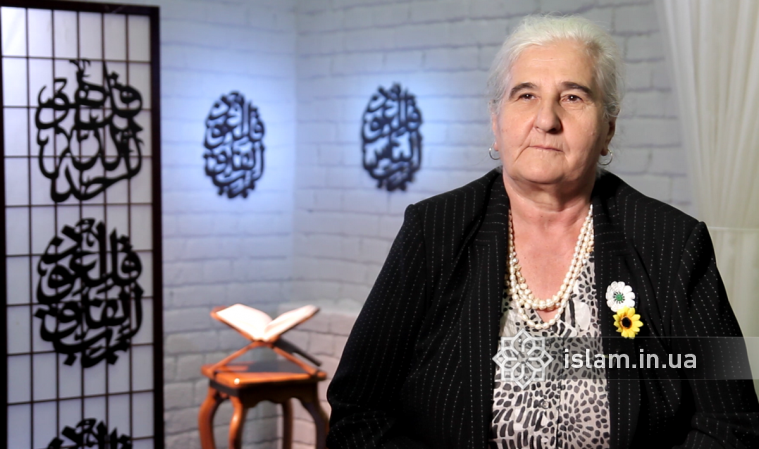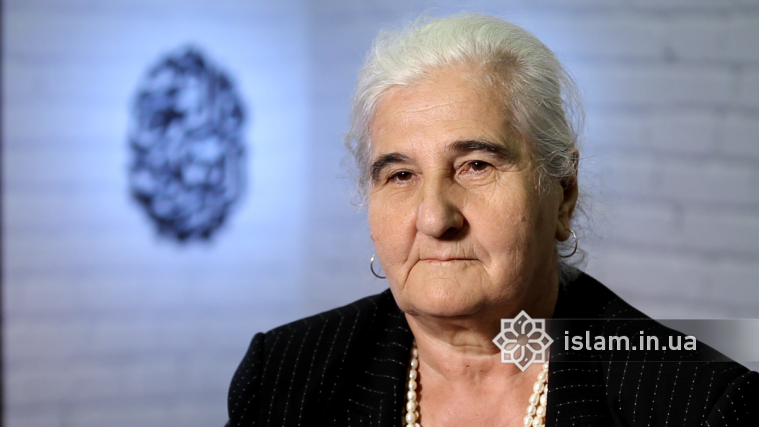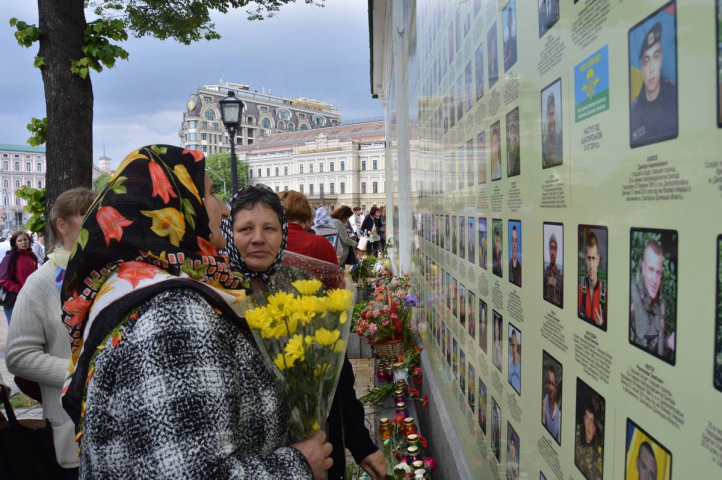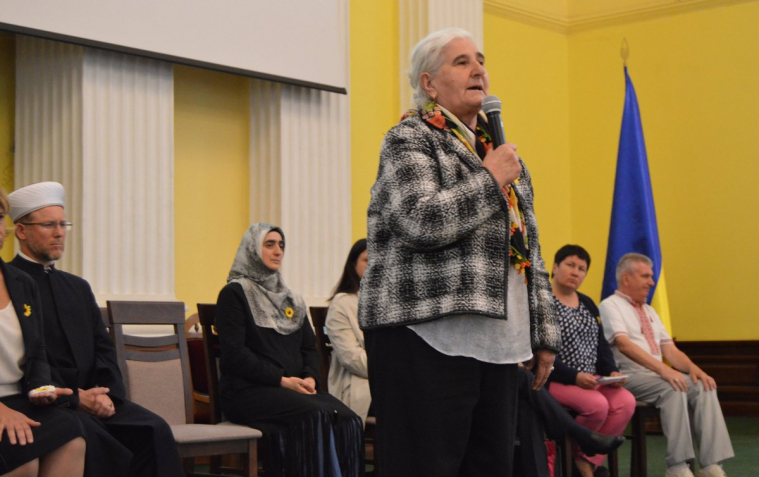In July 1995, a horrible tragedy took place in the heart of Europe: a massacre of Muslim Bosniaks, mainly men and boys, in and around the town of Srebrenica during the Bosnian War. About 25,000 women and girls suffered rape and sexual abuse, and other forms of torture. Munira Subašić, President of the Organisation “Mothers of Srebrenica” (Bosnia and Herzegovina), recalls that during 11-13 June, over 10,700 people were killed: men, women, children, elderly people - nobody’s life was spared. She herself lost 22 members of her family in that genocide: her father, husband, son, two sisters and three brothers, her father in law, his two sons and their families.
The fate of her 17 year-old son was unknown to her for many years, until his remains were recovered: only two small bones, both in mass graves 25 km apart. Her elder son, who was 22 at the time, was in the army and managed to get to Bosniak controlled territory. It took months for Munira reunite with him, and it was then that she felt there was a purpose to her life again.
23 years have passed, the pain never went away. The relatives of the victims still have to struggle for the truth to come out, and to bury the bones of their children.
In 2004, in a unanimous ruling the Appeals Chamber of the International Criminal Tribunal for the former Yugoslavia (ICTY) in The Hague, ruled that the massacre of the enclave's male inhabitants constituted genocide; the ruling was also upheld by the International Court of Justice (ICJ) in 2007.
On 8 July 2015, Russia, at the request of the Republika Srpska and Serbia, vetoed a UN resolution condemning the Srebrenica massacre as genocide. On 9 July 2015, both the European Parliament and the U.S. Congress adopted resolutions reaffirming the description of the crime as genocide.
Ms.Subašić was visiting Kyiv in May 2018 to take part in a number of high-profile events for the Mother's Day, and kindly answered some questions regarding the greatest tragedy of her life.
Over the past few years, several hundred bodies identified as victims of Srebrenica were recovered, exhumated and finally laid to rest. Still, they say there are many more burials yet to find. Maybe, you have at least a general idea of how many of such grieve findings we can expect in the future?
Now there are about two thousand people we are still looking for. We keep on finding new body parts each day. The problem is that the whole corpse is a rare finding, we have to literally collect the murdered people in pieces. And we are burying those body parts even today, after trying to identify them.
When the first mass graves were found and we were exhuming the remains, we found our that those graves were even more gruesome than we could imagine. Those who killed our children not only buried them in mass graves, they dismembered the bodies and mixed the body parts before burying them. So one’s leg can be found in one grave, and his arm in the other grave, and a single finder in yet another one. So there were doctors and experts who compared the body pieces from different mass graves and trying to put together different body parts belonging to the same person.
I personally had to bury just two bones, all that was found of my youngest son. They were digging and digging, but couldn’t find any more of his remains yet. It adds even more pain to the fact that he was killed, you know: 18 years of waiting to find the remains, and then you end up with that! When a mother gives birth to a child, it has every body part, like hands, legs and head, in place! And then they dig out only those two bones, from different mass graves 25 km apart, and match them together through DNA testing.
The Serbs were destroying those mass graves whenever they were the first to find such burials, because they wanted to cover up those crimes. There was one American organisation who took the living relatives’ blood for testing in order to identify the body pieces that were recovered, and tell if those body pieces belonged to that person’s missing relative. Most of the mothers just got pieces of their children’s bodies for burials, hardly any of us was lucky enough to get hold of the whole corpse.
But even when given of just a piece of their child’s body to bury, the poor mother at least have a material proof that their child ever existed, which is lucky, too, because other mother’s can’t find anything and they have to prove the very fact that their child ever lived, and Srebrenica Memorial is the only place for them to mourn! It hurts, it’s so much pain. So much neverending pain.
I’ve read that heartbreaking story that during those events people tried to find shelter at the bases of the UN “blue helmets”, but were denied of access to safety…
Yes, and we sued the Netherlands authorities, the Netherlands Ministry of Defence, for that, and the case was investigated for 13 years. Finally, the Tribunal ruled last year that the Government of Netherlands was responsible for 30% of what happened. They never accepted the whole responsibility. But unfortunately, such situations occurred during July 1995 not only in Srebrenica, but in other places as well. And I’m sorry to say that the UN “blue helmets” not from only Netherlands, but other countries, including Ukraine, failed to defend the civil population. They all betrayed us.
People who were supposed to defend the civil population, betrayed us. Both the Dutch and Ukrainian soldiers were on a mission to defend the Bosnian civil population, but they failed to do so. That plane with the Dutch people, shot down above the Ukrainian territory [MH-17, - T.E.], may look like an accident, but if you look back in history, I think there’s a bitter lesson in that.
Whenever you do something bad by either action or inaction, it comes back to you with something twice as bad - and then you have your own mothers crying for their murdered children. Maybe, someday, after having grieved over their own losses, people who failed us will reflect on the sequence of events and understand how wrong it was for them to make the decisions they’ve made back in 1995, how those decisions affected other people and how much pain and tragedy they caused.
Do I get it right: the survivors of that massacre happen to be alive just by chance or because their murderers were just tired of killing them? There was no one for the rescue?
Correct. And it’s an overstatement to say that we, the mothers, are “the survivors”. When you see you son and your husband killed, your daughter raped - you die inside the very same moment. We all are now just … walking dead. I hope nobody has to experience that again, ever.
What do you think it will take for your people to recover from that horrible tragedy?
It takes the two parties’ involvement to overcome something that big and tragic. We do not raise our children to be overwhelmed with hatred, but we still make sure that they know and remember the truth.
The time won’t heal, sadly. The only remedy is, when the people guilty of those crimes acknowledge their action and apologize, just like the Germans did to the Jews after the World War II. Maybe it feels better if they do just that. But as long as they are rejecting their responsibility for what happened, there’s no way to overcome the situation and move on with everybody’s lives. What we see today is that the war criminals are proclaimed people’s heroes, schools and streets are getting named after them, those people walk free - and they are responsible for the death of 10,700 people in Srebrenica alone!
Instead of being subject to a tribunal and get punished for their crimes, such people are awarded and praised! That’s what our life is like. We pray to God that nothing like this ever happens again.
Any mother, no matter what her name is, what faith she is - Muslim, a Serb, A Horvat, a Roma, a Jew - any mother is just a mother. Being mothers is something that unites us all over the world, we cooperate even with mothers whose children killed our children, because nobody can understand a mother better than another mother. So we, as mothers, let the whole world know of what happened in Srebrenica.
Maybe one day you come to Srebrenica and see the place where the memorial is, and read the names of the victims and their dates of birth and death… nothing more is needed to see to realize the scale of the tragedy. There were babies, there were elderly people as old as 100 years. The killers didn’t care about the age and the gender and the cultural background of their victims.
You said that the Mothers of Srebrenica were cooperating with the mothers of your children’s killers. What exactly is that cooperation?
For instance, a child was killed, and the mother can’t even find their remains. So we approach the organisation of soldiers’ mothers from the other side, because the facts we are looking for are actually in their hands. We ask those mothers if they know anything about any mass graves still undiscovered, at least approximate location of such burials.
Do they testify against their own children? Certainly not. But they, if anything, may give us a clue where the other burials are and where more mothers can recover at least some fragments of their children’s bodies. It’s all about conscience and compassion, because every mother can understand what it is like to lose their child and not be able to even bury that child. Many of them don’t wish to die before giving a clue to the victims’ mothers. And we don’t want to die before the last of the victims has their own grave, for it’s our responsibility before the mothers who didn’t live long enough to see it happen. That the way they are cooperating.
Interviewed by Tetiana Evloeva





